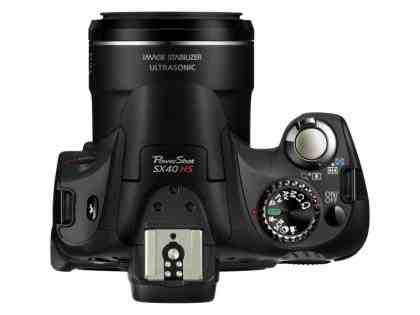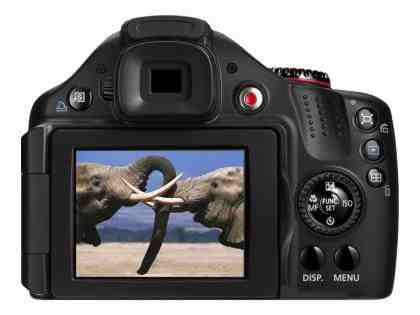Expert Reviews is proud to bring you this Canon PowerShot SX40 HS review from Short Sharp Reviews - click through to YouTube for a 1080p HD version
For a while it looked as though bulky, expensive bridge cameras were going to be squeezed out of the market by entry-level SLRs and compact system cameras, but the latest generation has come back fighting. Optical zoom ranges are now reaching the mid-thirties, and with burst speeds in excess of 10fps, these cameras are well equipped for sports and wildlife photography. They excel for video capture, too, with most offering 1080p capture and effective autofocus while recording. Those big zooms help for video, too, letting the user shoot from a distance so people in front of the camera don't feel too self-conscious.

The SX40 HS arrives with all its vital statistics in order: a 35x zoom stretching from an ultra-wide-angle 24mm all the way to 840mm, 1080p AVC videos and 10.3fps burst shooting. There's a hotshoe underneath a plastic protective cover, an electronic viewfinder and an articulated LCD screen. Both screens are on the small side. We're used to these viewfinders being small, but the screen's 2.7in size and 230,000-dot resolution are disappointing for the price. It didn't impact too heavily in normal use but manual focus was tricky to judge, despite the assistance of a digital magnify function while adjusting.
The full complement of manual exposure modes is included, and we like how the preview image becomes brighter or darker to reflect exposure settings. However, those who like to tinker with exposure will be dismayed at its inability to save photos in RAW format.
Focus control is particularly important in an ultra-zoom camera, as telephoto shots have a shallow depth of field so choosing the right focus point is critical. As such, it's great to see a dedicated button for moving the focus point around the frame. There's also a track focus option for tracking moving subjects, although it didn't seem as reliable as other implementations we've seen.
Another button momentarily pulls back the zoom, providing a cure to the common problem of losing the subject when working at long telephoto focal lengths. A custom button can be assigned to one of 15 functions including AE lock, white balance, aspect ratio and burst mode. We'd have liked one or two more physical buttons to give direct access to more of these functions.

The Panasonic Lumix DMC-FZ150 recently raised the bar for performance, and the SX40 IS can't match it. Its 10fps burst mode lasts for eight frames, which isn't far off the FZ150's 12fps for 12 frames, but it's only available as a scene preset that prohibits control to virtually every other setting. For full control – or for burst shooting that lasted longer than a second – we had to settle for 2.1fps with fixed focus or 0.8fps with continuous autofocus. By contrast, the FZ150 managed 5.4fps with continuous autofocus, slowing to 2.7fps after 22 shots.
Another concern is over autofocus performance and general shot-to-shot times, with the latter averaging 2.8 seconds in our tests. That's four times slower than the FZ150, which came in at 0.7 seconds. Not everyone feels the urge to fire off a shot every second, but it's a useful technique for ensuring that fleeting moments aren't missed. Meanwhile, the FZ150's quicker autofocus could make the difference between catching the perfect shot and missing it.
